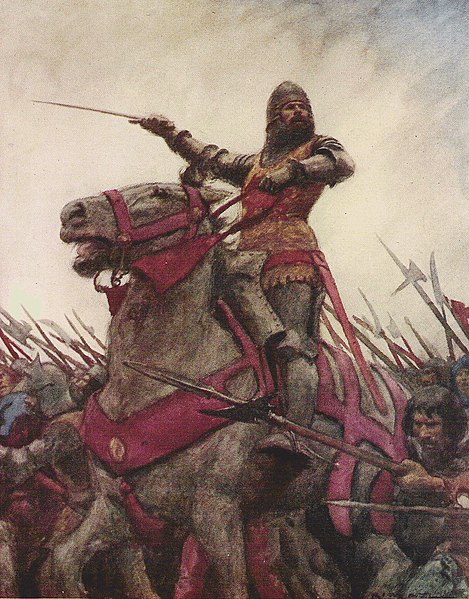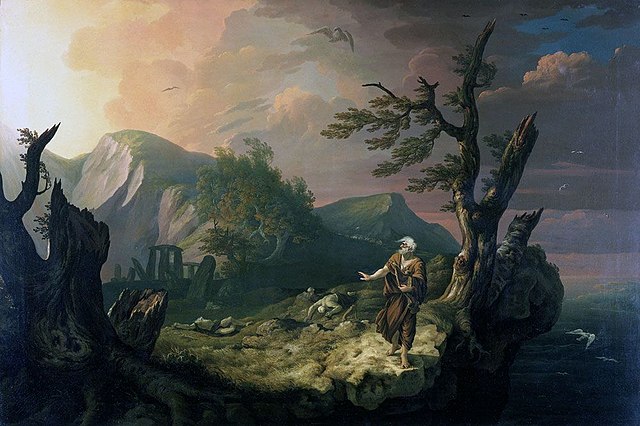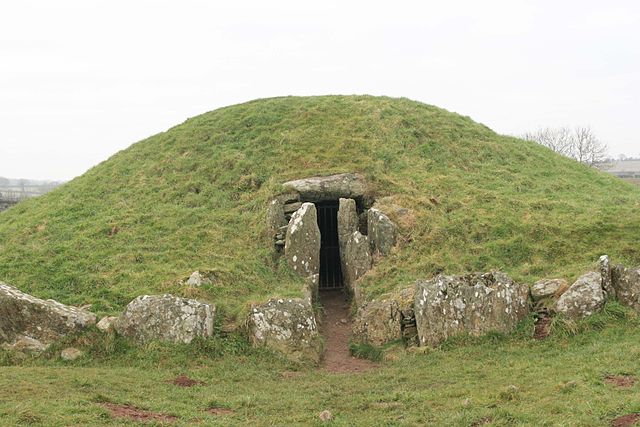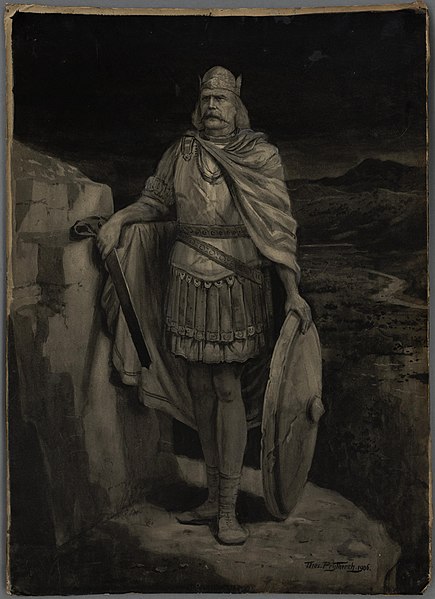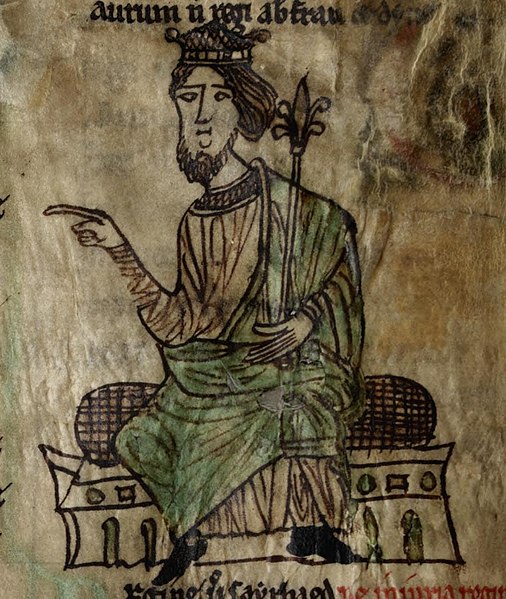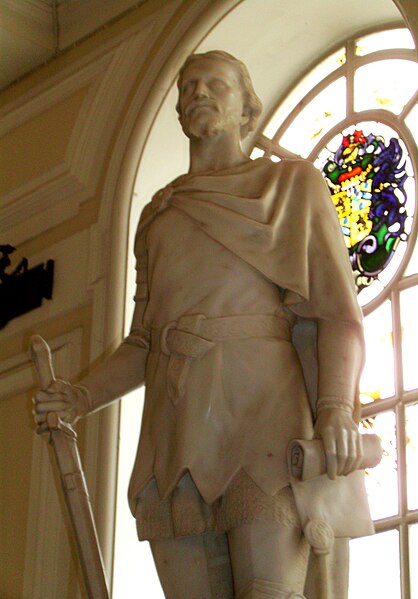The culture of Wales is distinct, with its own language, customs, festivals, music, art, mythology, history, and politics. Wales is primarily represented by the symbol of the red Welsh Dragon, but other national emblems include the leek and the daffodil.
Market Day in Old Wales by Sydney Curnow Vosper (1910)
Owain Glyndŵr painting by AC Michael
The Bard, 1774, by Thomas Jones (1742–1803)
360° panoramic view of the amphitheatre at Caerleon
Wales is a country that is part of the United Kingdom. It is bordered by the Irish Sea to the north and west, England to the east, the Bristol Channel to the south, and the Celtic Sea to the south-west. As of the 2021 census, it had a population of 3,107,494. It has a total area of 21,218 square kilometres (8,192 sq mi) and over 2,700 kilometres (1,680 mi) of coastline. It is largely mountainous with its higher peaks in the north and central areas, including Snowdon, its highest summit. The country lies within the north temperate zone and has a changeable, maritime climate. The capital and largest city is Cardiff.
Bryn Celli Ddu, a late Neolithic chambered tomb on Anglesey
Caradog by Thomas Prydderch. Caradog was leader of the north Walian Celtic tribe, the Ordovices.
Hywel Dda enthroned
Statue of Owain Glyndŵr (c. 1354 or 1359 – c. 1416) at Cardiff City Hall


